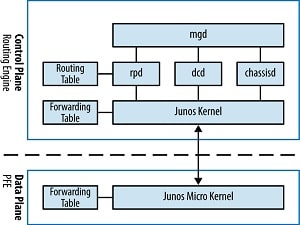Juniper MX80 Key Components
Juniper Networks understands the needs of today’s most successful businesses and provides networking solutions for a variety of industries, such as healthcare, education, and banking. Their team puts utmost importance on customer satisfaction to build powerful networks that are able to respond quickly to organizations’ ever-changing demands. Juniper is committed to delivering quality products in order for these companies and communities achieve their goals with confidence.

Key Components
The Juniper MX80 is a high-performance routing platform that is designed for demanding enterprise and service provider applications. It is a compact and versatile platform that offers a wide range of features, including:
- High-performance forwarding plane: The MX80's forwarding plane is capable of delivering up to 80 Tbps of system capacity.
- Scalable architecture: The MX80 can be scaled to meet the needs of the largest networks. It can support up to 160 x 100GbE or 40 x 400GbE interfaces in a single chassis.
- Rich feature set: The MX80 offers a wide range of features, including Inline MACsec at 10/40/100 GbE with no penalties, Advanced JUNOS routing software, Support for a wide range of protocols and technologies and Comprehensive security features.
- Cloud-based features: The MX80 supports a variety of cloud-based features, such as Juniper Cloud-Enabled Routing (CER), Juniper Cloud-Enabled Traffic Management (CTM) and Juniper Contrail SDN controller
Architecture
The MX80 is a modular platform that consists of three main components:
- Routing engine (RE): The RE is the brains of the MX80. It is responsible for routing traffic and managing the control plane.
- Packet forwarding engine (PFE): The PFE is responsible for forwarding traffic at line rate.
- Modular interface cards (MICs): MICs provide the MX80 with its physical interfaces. They are available in a variety of speeds and form factors.
Deployment
The MX80 can be deployed in a variety of environments, including:
- Service provider networks: The MX80 is a popular choice for service providers due to its high performance and scalability. It is often used to build core networks and to provide edge routing services.
- Enterprise networks: The MX80 is also a popular choice for large enterprises. It is often used to provide core routing services and to connect branch offices.
- Data center networks: The MX80 is a good choice for data center networks due to its high performance and support for cloud-based features.
One JunOS
Creating a single network operating system that’s able to be leveraged across routers, switches, and firewalls simplifies network operations, administration, and maintenance. Network operators need only learn Junos once and become instantly effective across other Juniper products. An added benefit of a single Junos instance is that there’s no need to reinvent the wheel and have 10 different implementations of BGP or OSPF. Being able to write these core protocols once and then reuse them across all products provides a high level of stability, as the code is very mature and field-tested.
The Juniper MX80 is a high-performance, scalable, and versatile routing platform that is well-suited for a wide range of applications. It is a good choice for enterprises, service providers, and cloud-based businesses.